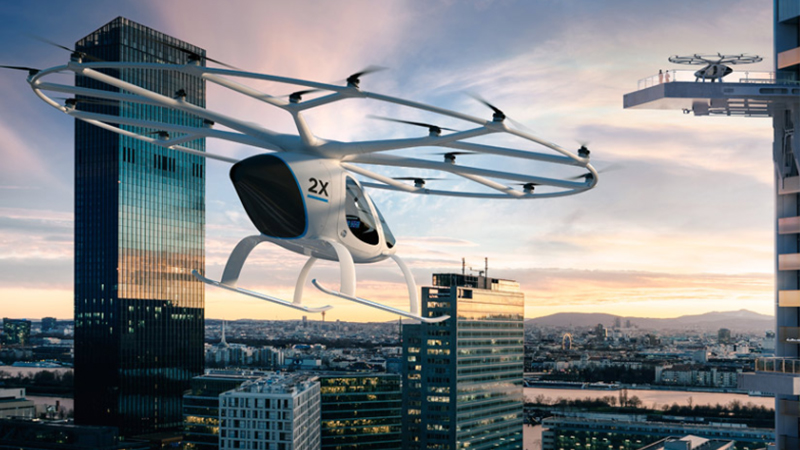

Management consultancy company McKinsey recently claimed that 2030 could be the turning point for the eVTOL industry. According to its insights, eVTOL infrastructure could rival commercial airlines in terms of flights per day and fleet size by the beginning of the next decade.
Part of its research comes from three of the main companies in the sector: Volocopter, Joby Aviation, and Lilium.
But how feasible is 2030 as a target for the infrastructure of this scale? How close are the companies to reaching their targets, and how do their products differ?
All three companies plan to commercially launch their products in 2024. Although the rollout could be small, it’ll be a necessary step for understanding how their eVTOLs will actually work in the real world. That said, Volocopter plans to open with a bang, as it has secured a contract with the Paris 2024 Olympics to transport athletes.
Last year, Lilium began test flights on its latest iteration of its Jet in Spain. Joby has similarly been testing its eVTOL in advance flights, gathering vital data about battery capacity and flight conditions. Provided everything goes smoothly for the three companies, nothing is stopping them from launching next year.
While the companies are all producing eVTOLs, there are fundamental differences between their products. For example, the VoloCity is a two-seat, 18-rotor eVTOL. Currently, it’s piloted, but the company plans to move towards autonomous flight in the future. Its niche is short-range, inter-city flights that will serve as urban air taxis.
Lilium’s current model is a seven-seat, ducted, fixed-wing eVTOL. Its niche is longer-range flights similar to small passenger jets. For example, we might use it for connecting flights or to get from a suburban area to the outskirts of a city. Recent testing put its range at around 240km.
Finally, Joby’s eVTOL is almost a combination of the two. It uses a multi-rotor design without wings (in the traditional sense) and has a range of 240km. It’ll function as a longer-range transport service; Joby claims its eVTOL will be able to fly from downtown New York to JFK Airport in 7 minutes.
The bottom line is that the three companies’ products are different enough that they can all corner different areas. This should mean less direct competition in their niches and more potential for capitalising on the market.
McKinsey’s research claims that, by 2030, the eVTOL market will have an estimated 1,000 aircraft and 20,000 flights per day. It could also be generating an estimated annual revenue of $3 billion off 70,000 daily passengers.
While these estimates are quite high, they’re theoretically achievable. Reaching them presents numerous operational challenges, though. For example, companies will need to develop and build vertiport infrastructure, and there are issues of power consumption and availability and certification to consider.
Finally, we must also think about passenger uptake and experience. eVTOL technology is brand new, and public resistance is to be expected due to unfamiliarity. Similarly, as McKinsey states, short flight times will mean certain passenger expectations in terms of the aircraft they use and how long they spend at the terminal waiting.
In short, there’s a lot to overcome to reach 20,000 daily flights in the next 7 years. However, if interest in eVTOL technology remains on track, and there aren’t any considerable developmental obstacles, we could see some considerable market domination by the next decade.